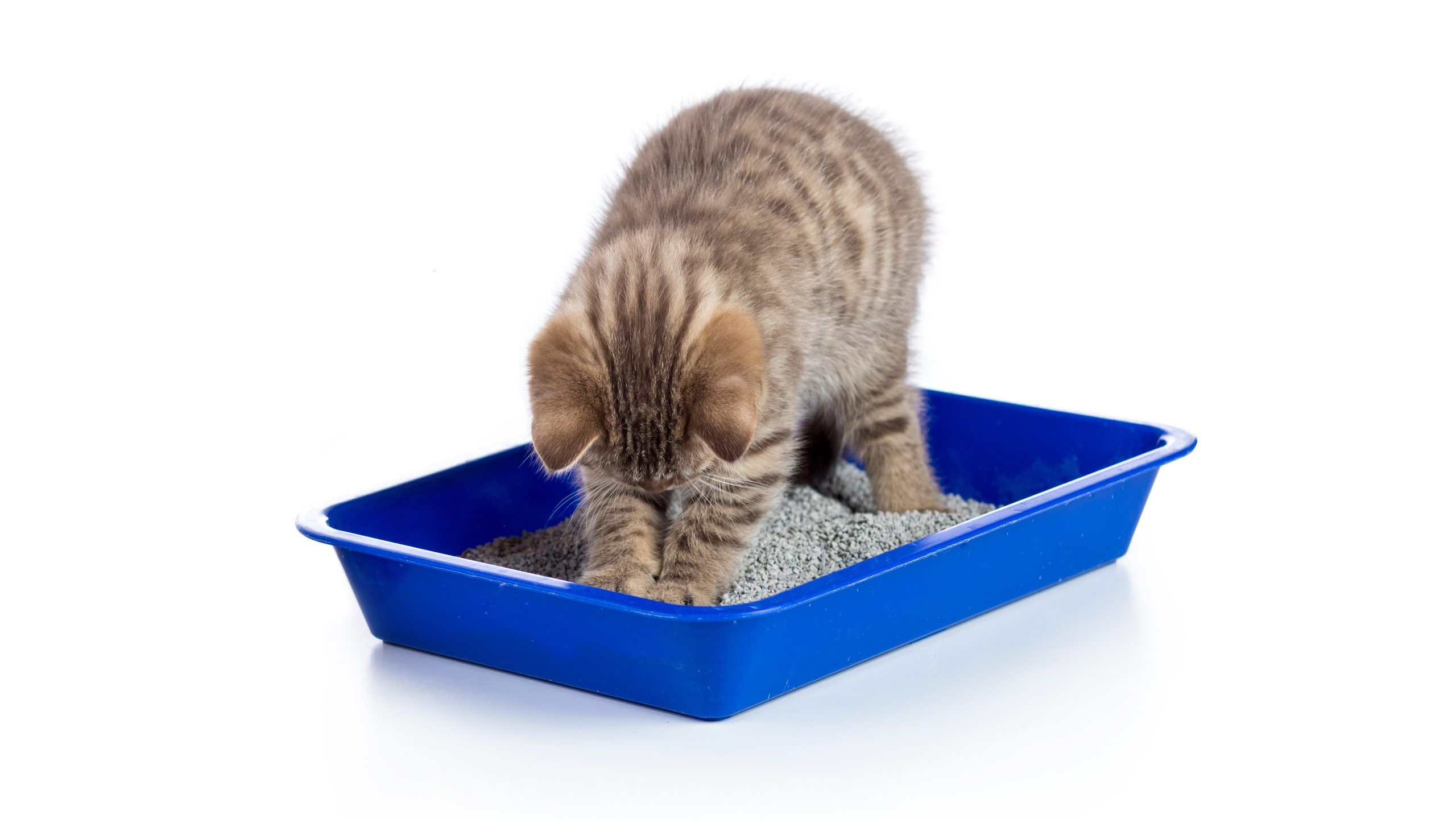Problem Solving: Toileting Issues

Cats urinate/defecate in locations other than the tray due to issues with health, litter trays, or stress. See a vet to rule out health issues immediately if straining or urinating frequently.
Cats drinking more, and therefore urinating more, must see a vet.
Never punish a cat.
Praise when using the tray.
See Litter Basics below for help. If the problem continues, see a vet or a pet behaviourist.
LITTER BASICS
How many litter trays and what size?
- The 1 + 1 rule = 1 litter tray for every cat, plus 1 extra tray to share. e.g. 1 cat = 2 trays, 3 cats = 4 trays.
- Tray size must allow natural movement when toileting.

Litter trays must always be clean
Dual Tray Wood Pellet Litter Systems (available from Ten Lives)
- Remove faeces as they appear.
- Remove urine-soaked litter from the base tray every 2-3 day, spray base with enzymatic cleaner and wipe dry with paper towel.
- Add 1-2 cups of old litter from top tray to the base tray.
- Add 1-2 cups of new litter to the top tray.
- Every 4-6 weeks discard all used litter and replaced with new.
Clumping/Crystal Litter
Do not use clumping/crystal litter for kittens, they cause serious health issues if ingested.
- Remove faeces and urine-soaked litter 2-4 x per day.
- 1 x per week empty litter, wash trays as per instructions below.
- Only reuse litter if extremely clean and top up with new litter.
- Every 2-3 weeks discard all used litter and replaced with new.
Recycled Paper Litter
- 1 x per day empty all litter and discard, wash trays as per instructions below.
- Add new litter.
Wash Litter Trays
- Wash in warm water and a plain laundry detergent or enzymatic cleaner such as Biozet Laundry Liquid (NOT Biozet Attack) available from supermarkets or Urine Off from Ten Lives. Other types of enzymatic cleaners are available from vet clinics and pet stores. Dry trays completely before refilling.
Types of Litter
- Cats have very sensitive pads on their feet and an acute sense of smell. They may not like the litter type you are providing no matter how clean you are maintaining it. Try different types to find one your cat likes.
Litter Tray Placement
Do place litter trays in areas that are:
- Easy for the cat to get to.
- Low traffic, well-lit, open areas.
- Preferred by the cat.
If you do not like the cats preferred location of the litter tray it can be moved gradually, approximately 5cm each day, until the tray reaches its new destination.
Provide another tray in the desired location whilst gradually moving the other tray.
Don’t place litter trays:
- Near food and water.
- In corners of rooms where cats feel trapped.
- Near noisy appliances.
- In multi-cat households, do not place all the litter trays in the same room.
Litter training kittens or a new cat
- Follow the recommendations for Toileting Issues and Litter Basics.
- Put several trays in easy to reach places while they are settling in. Trays can be moved gradually, approximately 5 cm each day, until they reach the new destination.
Cleaning cat urine from carpeted or fabric furniture areas. You will need:
- Enzymatic Cleaning Product such as Biozet Laundry Liquid (NOT Biozet Attack) available from supermarkets or Urine Off from Ten Lives. Other types of enzymatic cleaners are available from vet clinics and pet stores. Enzymatic cleaning products effectively eliminate ammonia from urine which reduces the chance of the cat urinating in the same location.
- White vinegar – destroys bacteria. Bacteria causes the unpleasant odour in carpet/fabric.
- Bicarbonate soda – deodorizes, therefore reducing odour.
How to clean cat urine: - Blot up urine with absorbent material.
- Mix 1 tablespoons Biozet in 1 litre of warm water or follow the directions for usage of your chosen enzymatic cleaning product.
- Wash/spray area, soak 5 minutes, blot with clean absorbent material, repeat 2 times.
- Rinse area with 1 part white vinegar to 4 parts water, soak 5 minutes, blot with clean absorbent material until dry as possible.
- When almost dry lightly sprinkle with bicarbonate soda, vacuum once completely dry.
NOTE:
Spot test area prior to cleaning.
Do not use products containing bleach. Bleach contains ammonia which will attract cats to urinate in that area.
Use an enzymatic cleaner to wash items used for cleaning and other items cats urinate on.
Spraying on Upright Surfaces:
Spraying – cat backs up to upright surfaces with tail erect, often quivering, and squirts urine.
Urinating – cat squats to wee on flat surfaces.
Cats spray to mark territory or when stressed; it is still important to rule out possible health issues with a vet.
- Desex entire male cats as they are more likely to spray. Female cats sometimes spray.
- Never punish cats.
- Provide separate food, litter trays, sleeping, resting and household areas for each cat.
- Identify the trigger – intimidation/fights with other cats, new cats in the area, a change in the owner’s schedule, neighbouring cat spraying items on your property such as doors, outdoor furniture etc.
- Block visual access to visiting neighbourhood cats by block windows or keep visiting cats out of your property by using cat deterrent devices or cat fencing.
- If a neighbouring cat is marking their territory on your property clean the area with an enzymatic cleaner and follow the guidelines for Cleaning Cat Urine. Blocking and removing the smell from other cats will reduce your cats stress and need to spray.
- Follow the guidelines for Cleaning Cat Urine.
- Use calming pheromones – Feliway and/or therapeutic music – Pet Acoustic Pet Tunes for Felines, both reduce stress and other behavioural issues in cats.
If the problem continues see a vet or a pet behaviourist.
